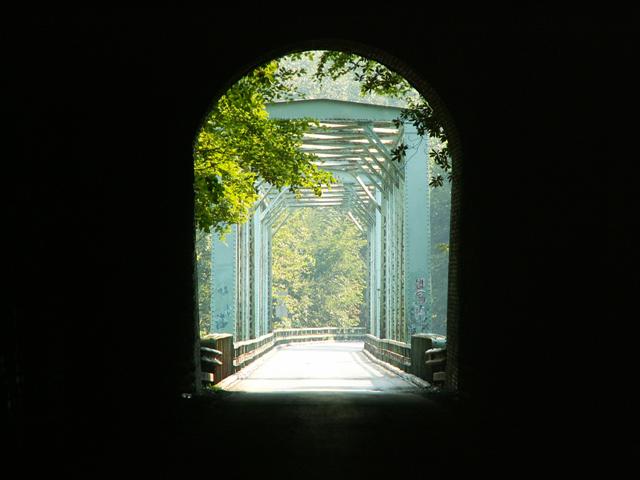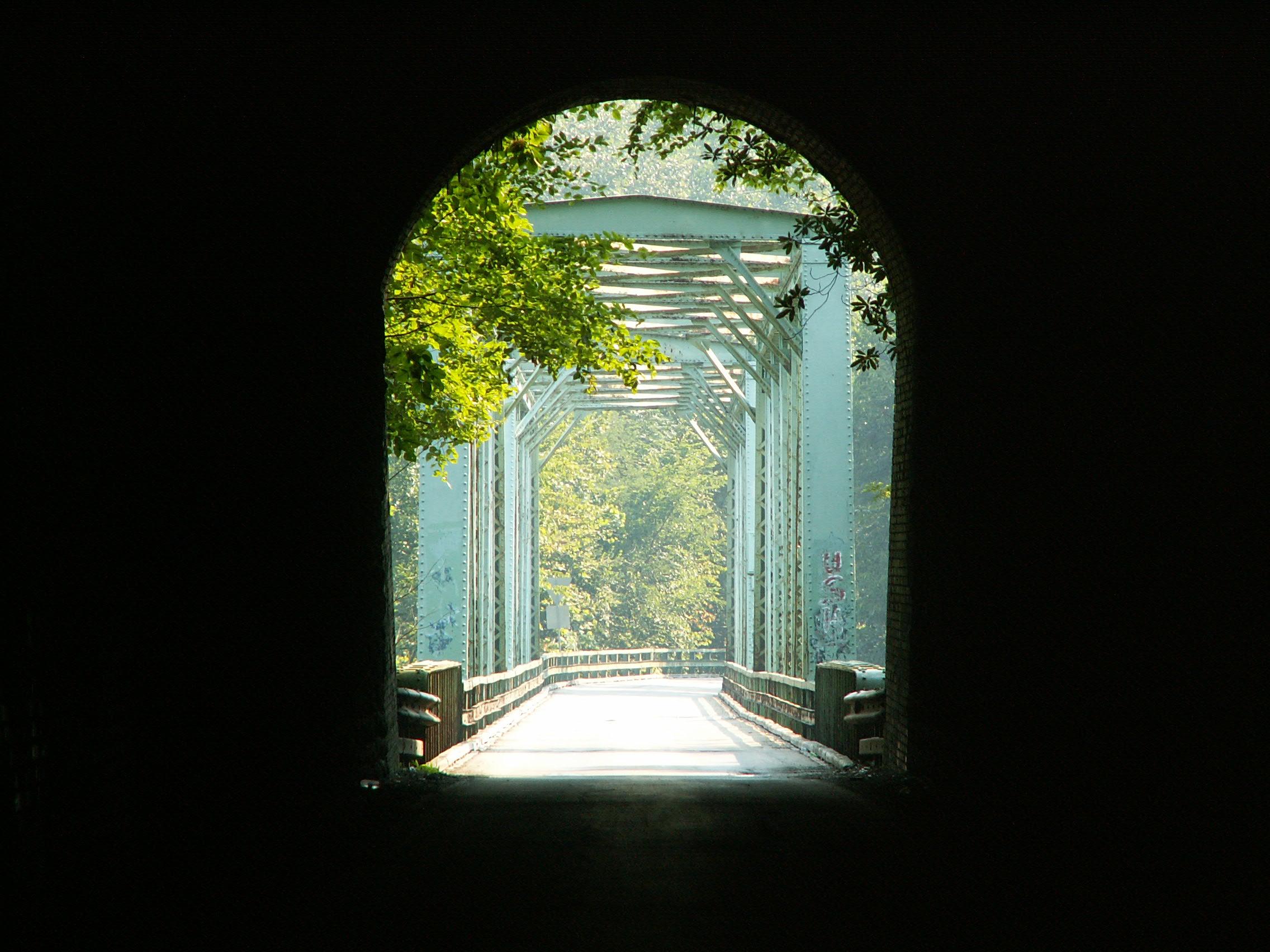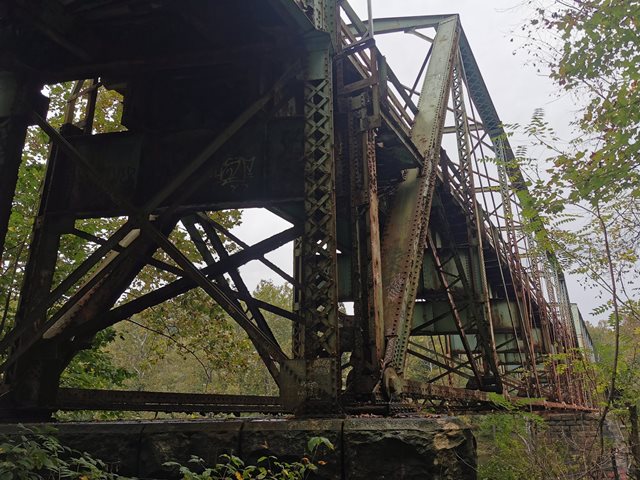We Recommend:
Bach Steel - Experts at historic truss bridge restoration.
BridgeHunter.com Phase 1 is released to the public! - Visit Now
Layton Bridge

Primary Photographer(s): Nathan Holth and Rick McOmber
Bridge Documented: August 2007, July 6, 2014, and October 3, 2021
Near Layton: Fayette County, Pennsylvania: United States
Metal 7 Panel Pin-Connected Pratt Combination (Half-Deck/Through) Truss, Fixed and Approach Spans: Metal Stringer (Multi-Beam), Fixed
1899 By Builder/Contractor: A. & P. Roberts and Company of Pencoyd, Pennsylvania (Pencoyd Iron Works)
1984
181.0 Feet (55.2 Meters)
911.0 Feet (277.7 Meters)
13 Feet (3.96 Meters)
2 Main Span(s) and 15 Approach Span(s)
264038011000000

View Information About HSR Ratings
Bridge Documentation
This bridge's future is at risk!
Bridge Status: This highly significant historic bridge is slated for demolition and replacement by PennDOT!This bridge's song is:
Additional Information: Bridge originally built for Washington Run Railroad. Bridge was abandoned by the railroad in 1931 and converted by David Goldberg of Uniontown to vehicular traffic in October 1933 at a cost of $15,000.
View Archived National Bridge Inventory Report - Has Additional Details and Evaluation
View the National Register of Historic Places Nomination Form For This Historic Bridge.

Pennsylvania is a state that is unlike any other in terms of historic bridges. Bridges like the Layton Bridge are largely the reason. Pennsylvania features bridges like the Layton Bridge that are truly unique and so beautiful they can take your breath away when you see them for the first time. The Layton Bridge itself is spectacular, but its beautiful natural setting, along with the incredible brick and rock tunnel that is next to the bridge make the setting unlike anything encountered anywhere else. The skewed bridge is very impressive to cross, and the tunnel only adds to the experience. However, the bridge is even more unusual when viewed from the rail-trail that passes under the bridge. This is because this bridge features an unusual design, where the deck runs through the middle of the truss web rather than along the bottom. Thus, the bridge is as much a deck truss as a through truss.
The bridge is listed on the National Register of Historic Places, which recognizes its extremely rare deck configuration. It is also noteworthy for association with an uncommon bridge company. The skewed configuration of the main spans, and the significant approach systems are also aspects that add to the value of the bridge. Preservation of this bridge should be considered a high priority given the significance of the structure, and also the aesthetic qualities of the bridge, as well as the beautiful tunnel that is next to the bridge. However, these dry descriptions can only begin to describe the reasons why this bridge should be preserved. It is a bridge you have to visit to truly appreciate its value, since beauty and setting are major factors that contribute ton the value of this bridge. It is one of those bridges that gives a traveler the real sense that they have traveled back in time. As such, the bridge is an excellent record of its period in history. Sadly, the bridge has currently suffered rust damage on the lower chord due to salt and moisture. However, there are contractors who are skilled in replicating such damaged parts, including built-up members with rivets, and as such, these issues should not be considered barriers to preservation.
This bridge has fairly massive members for an 1899 bridge, yet has a very narrow deck width. It also has very large built-up floor beams. It also features a long trestle-like approach system at one end with metal bents as support. It also features a beautiful brick tunnel at the other end. The bridge originally served a railroad line and was later converted for vehicular use.
This bridge is tagged with the following special condition(s): Unorganized Photos
![]()
Photo Galleries and Videos: Layton Bridge
2014 Bridge Photo-Documentation
Original / Full Size PhotosA collection of overview and detail photos. This gallery offers photos in the highest available resolution and file size in a touch-friendly popup viewer.
Alternatively, Browse Without Using Viewer
![]()
2014 Bridge Photo-Documentation
Mobile Optimized PhotosA collection of overview and detail photos. This gallery features data-friendly, fast-loading photos in a touch-friendly popup viewer.
Alternatively, Browse Without Using Viewer
![]()
2007 Photos: Original / Full Size Gallery
Original / Full Size PhotosFor the best visual immersion and full detail, or for use as a desktop background, this gallery presents selected overview and detail photos for this bridge in the original digital camera resolution. This gallery offers photos in the highest available resolution and file size in a touch-friendly popup viewer.
Alternatively, Browse Without Using Viewer
![]()
2007 Photos: Structure Overview
Mobile Optimized PhotosA collection of overview photos that show the bridge as a whole and general areas of the bridge. This gallery features data-friendly, fast-loading photos in a touch-friendly popup viewer.
Alternatively, Browse Without Using Viewer
![]()
2007 Photos: Structure Details
Mobile Optimized PhotosA collection of detail photos that document the parts, construction, and condition of the bridge. This gallery features data-friendly, fast-loading photos in a touch-friendly popup viewer.
Alternatively, Browse Without Using Viewer
![]()
Additional Unorganized Photos
Original / Full Size PhotosA supplemental collection of photos that are from additional visit(s) to the bridge and have not been organized or captioned. This gallery offers photos in the highest available resolution and file size in a touch-friendly popup viewer.
Alternatively, Browse Without Using Viewer
![]()
Additional Unorganized Photos
Mobile Optimized PhotosA supplemental collection of photos that are from additional visit(s) to the bridge and have not been organized or captioned. This gallery features data-friendly, fast-loading photos in a touch-friendly popup viewer.
Alternatively, Browse Without Using Viewer
![]()
Maps and Links: Layton Bridge
Coordinates (Latitude, Longitude):
Search For Additional Bridge Listings:
Bridgehunter.com: View listed bridges within 0.5 miles (0.8 kilometers) of this bridge.
Bridgehunter.com: View listed bridges within 10 miles (16 kilometers) of this bridge.
Additional Maps:
Google Streetview (If Available)
GeoHack (Additional Links and Coordinates)
Apple Maps (Via DuckDuckGo Search)
Apple Maps (Apple devices only)
Android: Open Location In Your Map or GPS App
Flickr Gallery (Find Nearby Photos)
Wikimedia Commons (Find Nearby Photos)
Directions Via Sygic For Android
Directions Via Sygic For iOS and Android Dolphin Browser
USGS National Map (United States Only)
Historical USGS Topo Maps (United States Only)
Historic Aerials (United States Only)
CalTopo Maps (United States Only)







